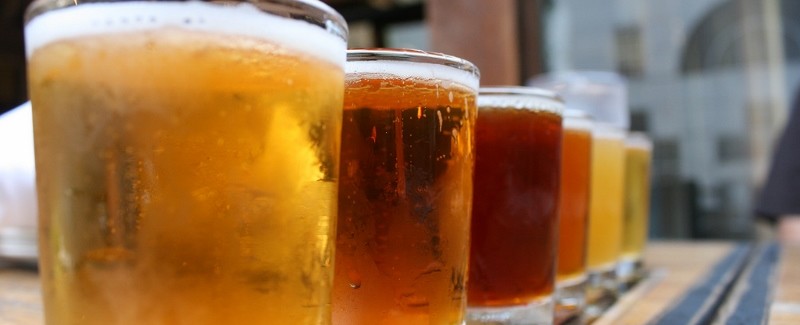
Without Grains There is No Beer
Break out your lederhosen — it’s time for Oktoberfest! The original Oktoberfest takes place in Munich annually and is the world’s largest Volksfest (beer festival and traveling fun fair), but the event has become so popular it has been replicated in countless cities around the world. Today, many American cities have celebrations allowing people to celebrate their German heritage, or simply sample Oktoberfest beers and other tasty foods and drinks.
Oktoberfest wouldn’t be the same without beer, and beer can’t be made without grain. Like all food and drink, beer is a product of its ingredients, and each type of beer requires different amounts of the grains that make up the beer. Here’s a summary of some of the grains used to make beer:
Barley is transformed into brew-ready malt by taking a bath in hot water. This causes the grain to create the enzymes that transform proteins and starches into fermentable sugars, which yeast will later feast on to create alcohol. With brewing, top billing on the grain bill usually is reserved for barley malts. Malts compose the bulk of the grain bill. Typically lighter in color, these base malts provide the majority of the proteins, fermentable sugars, and minerals required to create beer. Specialty malts are used to increase body, improve head retention, and add color, aroma, and flavor, such as coffee, chocolate, biscuit, and caramel.
Most barley grown in the United States is intended for malting purposes because of the premium it commands. Approximately three out of every four bushels grown in the United States is used for food/beverage production. The U.S. is also a consistent top-10 exporter of barley, according to the U.S. Grains Council.
Corn provides a smooth, somewhat neutral, sweetness when used in beer. It is utilized to lighten a beer’s body, decrease haziness, and stabilize flavor.
Corn is the most widely produced feed grain in the United States, with 90.5 million acres of corn planted in 2014, according to USDA, resulting in nearly 13.8 billion bushels of corn. While beer is one use for corn, and ethanol to be blended with gasoline is another, most corn is used in livestock feed.
Oats are used in conjunction with barley to create a creamy, full-bodied brew that’s as smooth as satin. Stouts are a natural fit.
U.S. farmers harvested just over three million acres of oats in 2015, with the majority of oats being grown in Northern states. Oats almost never have their bran and germ removed in processing, meaning they are a whole grain. You can read more about the goodness of whole grains here. While oats can be used to make a delicious stout beer, they are more commonly steamed and flattened to produce rolled oats, sold as “old-fashioned” or regular oats, quick oats, and instant oats. The more oats are flattened and steamed, the quicker they cook – and the softer they become.
Rice imparts little or no discernible taste as a beer ingredient, but the grain helps create a dry profile as and lighten a beer’s body.
Rice, the primary staple for more than half the world’s population, is used as more than just an ingredient in beer. USA Rice has information on how rice provides energy, and nutrients with health and other benefits. Eighty-five percent of the rice we eat in the U.S. is grown by American farmers and the U.S. receives nearly half its sales volume from exports. Four U.S. regions produce almost all of the country’s 2.9 million acres of rice harvested in the United States. Three of these regions are in the South and the other is in California, and each area specializes in a specific type of rice.
Rye can sharpen flavors and add complexity, crispness, and subtle spiciness as well as dry out a beer. The grain also can be kilned to create a chocolate or caramel flavor. Its shortcoming: since rye is hull-less, using large percentages of the grain during brewing can cause it to clump up and turn to concrete.
In 2015, U.S. farmers harvested 314,000 acres of rye. The United States is a significant producer of rye, with much of the production taking place in Georgia and Oklahoma. Rye can be used as a livestock feed, a flour in breads and other baked goods, and distilled into alcohol.
Wheat is packed with proteins and helps create a fuller body and mouthfeel and a foamy head in beer. A large proportion of wheat can result in a smooth, hazy brew such as a hefeweizen or a witbier. Wheat can impart a slight tartness.
U.S. farmers harvested over 48.4 million acres of wheat in 2015. Wheat is the primary grain used in U.S. grain products — approximately three-quarters of all U.S. grain products are made from wheat flour, and is grown in 42 states. About half of the wheat grown in the United States is used domestically. Wheat is a whole grain that can be used for flour, breads, baked goods, pasta and countless other options.
Now that you know more about the grains needed to make your favorite beer, maybe you’ll want to thank a farmer by buying them a beer at your local Oktoberfest or fall festival!

























